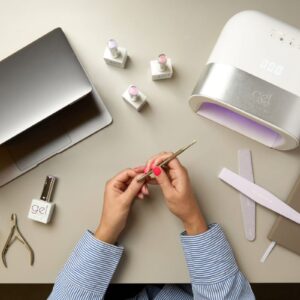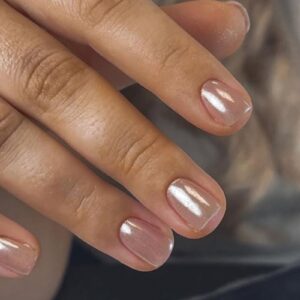
How to perfect fine line work in your nail designs
By Katie Barnes | 16 March 2021 | Expert Advice, Feature
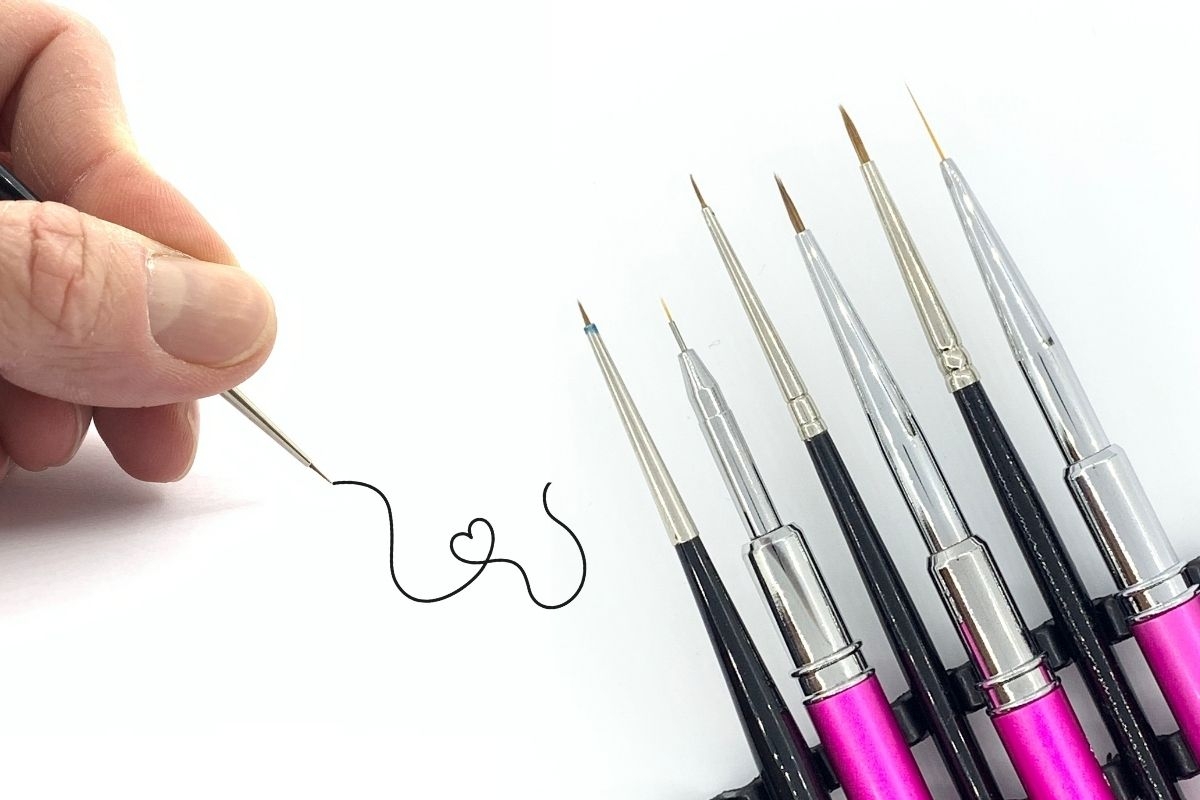
Mastering straight, fine lines can be difficult enough on a flat piece of paper, let alone on the curved surface of a nail. Throw a moving customer into the equation and the thought of creating fine lines can challenge any nail tech.
Brush
Choosing the right brush is the first essential step to success with creating fine lines. Choose a liner, detail or pointed round brush when painting thinner lines as these will make the process much easier. Liner brushes have a low number of bristles that are kept tightly together. Using a flat or square brush will lead to uneven lines as you change directions with it, while a regular round brush won’t give you a lot of freedom when it comes to the width of your line.
The size of the brush will determine the width of the line. The thinner the line and finer the detail, the finer the brush required. When brushes get this small, the sizing conventions can seem a little confusing. Brushes that are size 0 are actually the biggest liner brushes, followed by 00 ranging to 0000.
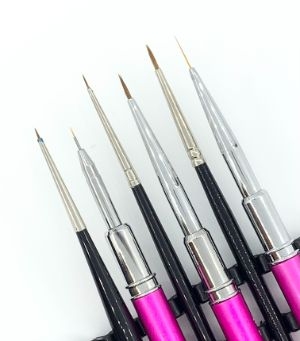
Preference will also play a part to the length of brush used, whether this is short, medium or long and different brushes may work better with different mediums. Generally a long brush can be best for longer lines and a short brush for shorter lines. Using a short brush to create a longer line can result in a broken line that doesn’t flow. Small details require a short brush for precision and definition.
Preparing your nail brush and cleaning it correctly during and after use is essential to longevity and keeping your brush at its optimum. It is important to ensure that your brushed used for line work and fine detail is always kept in a fine point.
You also need to consider the type of hair you are using – whether it is natural or synthetic. Natural hair brushes will last longer than synthetic hair brushes. Natural hair is curved so you need to change the angle of the brush on different parts of the nail. Natural hair brushes are made from kolinsky sable hair and offers the best quality and finest point are therefore more expensive.
Angle
To ensure that your thin lines are consistent and sharp, the angle at which your brush is held is vital. If you are looking to achieve thin lines, then a 90 degree upwards angle is required.
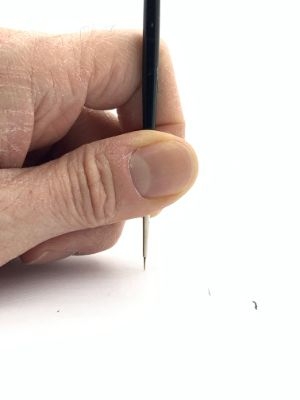
90 degree brush hold angle

Fine line from 90-degree brush angle
If you are looking for a thicker line, then you can hold your brush at a 90 – 45 degree angle. Some designs will require a combination of angles to achieve the desired result, such as a leaf that may have a thicker base and thinner tip. At first, this 90 degree angle can feel unnatural but you will become used to it over time. Try to keep your wrist still while moving the brush to achieve controlled steady strokes.

45 degree brush hold angle
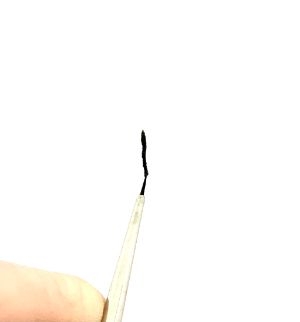
Fine line from 45 degree brush angle and belly of the brush touching the paper
To create a thin and fine line, make sure the belly of the brush doesn’t touch the canvas. Do not to press the brush down and let the tip of your brush do the work. As the tip has the least bristles you will gain more control and accuracy.
Pressure and product control
A steady hand is paramount to control of your brush and fine lines. It is important not to load your brush with too much medium otherwise this can run and flood onto your design. However, if not enough medium is used, this can result in gaps or a jagged effect in the line work. When picking up your medium, roll the brush into the paint and this will be drawn up into the belly of the brush. The amount of paint that you load into your brush directly correlates with how paint will be applied when you use the brush.
If you use too much liquid with your medium such as water and acrylic paints, then your line can become too transparent. If the brush appears too slippy, then you are likely to be using too much medium. Keeping your medium only on the first 1/3 to ½ of your brush is recommended to ensure that the medium doesn’t touch the ferrule and handle and build up. The thinner the line, the less medium required on your brush. Keep in mind, you’ll need to reload you brush frequently when painting lines this thin.
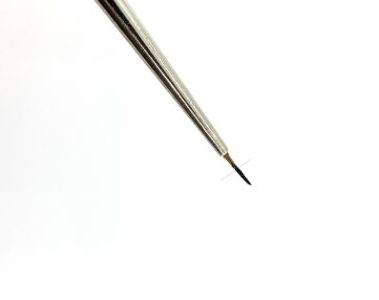
The general rule is the less pressure used, the thinner the line and the firmer the pressure used, the thicker the line.
There are many online tutorials and practice sheets and educational aids which can be beneficial for techs to practice their fine line work, such as Crystal Nails Practice Sheets or Edumats by Melanie Lewendon.
Fine line skills can take some time to develop. Keep practicing. You’ll naturally get better at this the more that you paint.
Love Katie B x

Read the latest issue





